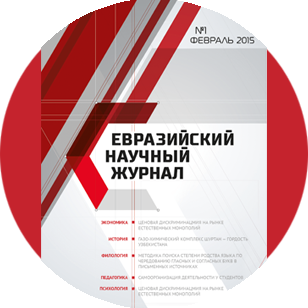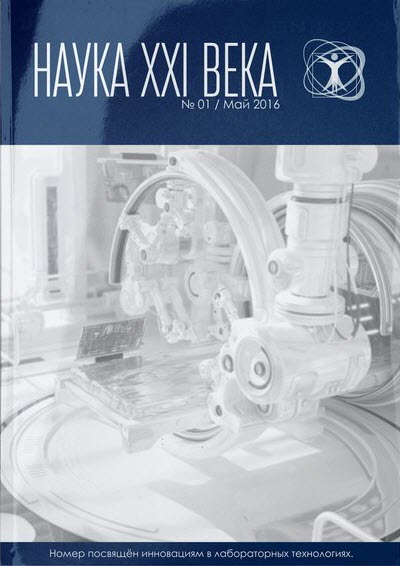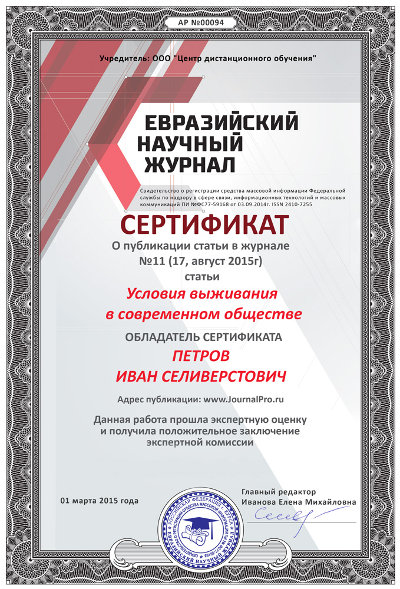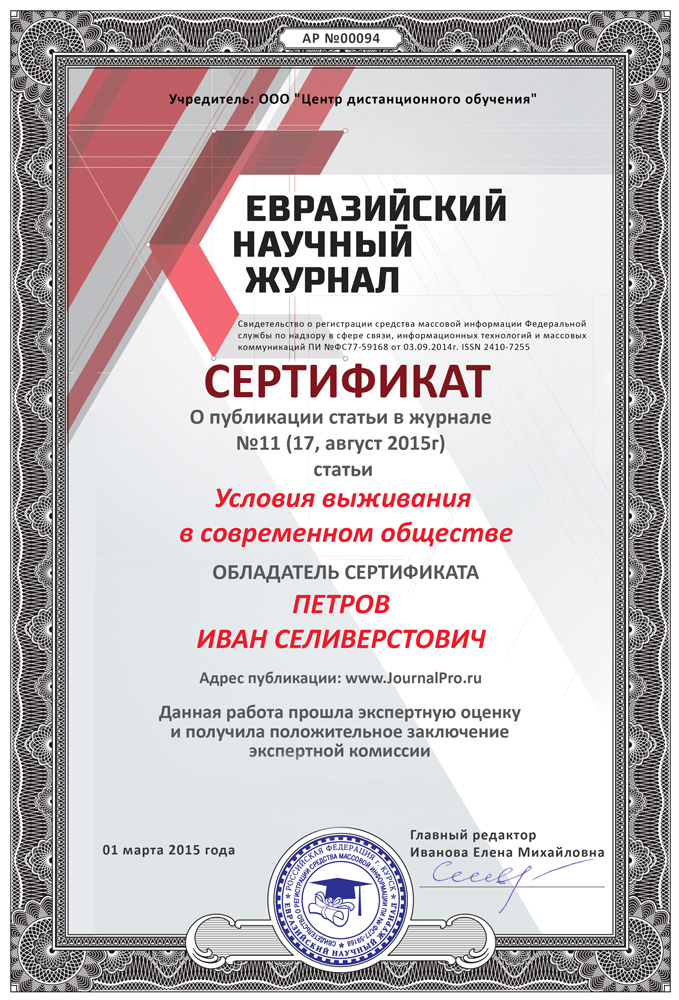Срочная публикация научной статьи
+7 995 770 98 40
+7 995 202 54 42
info@journalpro.ru
Единая природа тёмной энергии и тёмной материи
Рубрика: Технические науки
Журнал: «Евразийский Научный Журнал №7 2021» (июль, 2021)
Количество просмотров статьи: 1208
Показать PDF версию Единая природа тёмной энергии и тёмной материи
Б.М. Левин
ИХФ им. Н.Н. Семёнова РАН, Москва (1964-1987);
Договор о творческом сотрудничестве с ЛИЯФ
им. Б.П. Константинова РАН, Гатчина (1984-1987);
ФТИ им. А.Ф. Иоффе РАН, Санкт-Петербург (2005-2007).
E-mail: bormikhlev@yandex.ru
Boris M. Levin
Semenov Institute of Chemical Physics, Russ. Acad. Sci., Moscow (1964-1987)
In cooperation with Konstantinov Institute of Nuclear Physics, Russ. Acad. Sci.,
Gatchina (St. Petersburg) (1984-1987);
Ioffe Physical Technical Institute, Russ. Acad. Sci., St. Petersburg (2005-2007).
E-mail: bormikhlev@yandex.ru
Наблюдение особенности неона в ряду инертных газов (гелий, неон, аргон, криптон, ксенон) в отношении так называемого «плеча» временных спектров аннигиляции квазисвободных  -распадных позитронов от 22Na при температуре лаборатории — сглаживание/"размытие" плеча в неоне (
-распадных позитронов от 22Na при температуре лаборатории — сглаживание/"размытие" плеча в неоне ( -задержанные совпадения;
-задержанные совпадения;  -ядерный гамма-квант с энергией
-ядерный гамма-квант с энергией  ,
,  -один из аннигиляционных гамма-квантов с энергией
-один из аннигиляционных гамма-квантов с энергией  ) [1]) — вызвало более полувека назад нашу парадоксальную гипотезу о реализации эффекта Мёссбауэра
) [1]) — вызвало более полувека назад нашу парадоксальную гипотезу о реализации эффекта Мёссбауэра  в «условиях резонанса».
в «условиях резонанса».
С целью фальсификации гипотезы был выполнен критический эксперимент сравнения временных спектров с источником позитронов 22Na в неоне — сравнение образца естественного изотопного состава с образцом неона, обеднённым изотопом 22Ne. Гипотеза была подтверждена — установлен «изотопный эффект» [2]:
1. При уменьшении доли изотопа 22Ne в образце (от 8.86% до 4.91%) во временных спектрах проявляется плечо;
2. Возрастает (почти вдвое) доля позитронов, образующих в веществе позитроний ( -o-Ps)
-o-Ps)  , в образце, обеднённом изотопом 22Ne.
, в образце, обеднённом изотопом 22Ne.
Результат эксперимента (п.п. 1 и 2) не может быть объяснён, поскольку в рамках современной Стандартной модели/СМ возможный эффект исчезающе мал (10—7-10—6).
В неоне (ср. с п. 2) ранее другим методом установлено аномально высокое значение  по сравнению с аргоном
по сравнению с аргоном  для позитронов от 64Cu [3].
для позитронов от 64Cu [3].
На базе аномалий в неоне, с включением расхождений (порядка  ) теории (квантовой электродинамики/КЭД) и прецизионного эксперимента по абсолютному измерению времени жизни ортопозитрония [4, 5], была сформулирована феноменология расширения СМ — Проект новой (дополнительной)
) теории (квантовой электродинамики/КЭД) и прецизионного эксперимента по абсолютному измерению времени жизни ортопозитрония [4, 5], была сформулирована феноменология расширения СМ — Проект новой (дополнительной)  -физики «снаружи» светового конуса, вместо контрпродуктивной феноменологии «тахион», поскольку физический наблюдатель (экспериментатор, контролирующий причинно-следственные связи) находится «внутри» светового конуса [6]. Была обоснована [7] ошибочность отказа экспериментаторов мичиганской группы (Анн Арбор, США) [8] от своих прежних опубликованных результатов [4, 5].
-физики «снаружи» светового конуса, вместо контрпродуктивной феноменологии «тахион», поскольку физический наблюдатель (экспериментатор, контролирующий причинно-следственные связи) находится «внутри» светового конуса [6]. Была обоснована [7] ошибочность отказа экспериментаторов мичиганской группы (Анн Арбор, США) [8] от своих прежних опубликованных результатов [4, 5].
Структура и динамика вакуумного двузначного ( ) пространственноподобного атома дальнодействия/АДД с ядром АДД восходит к планковской массе
) пространственноподобного атома дальнодействия/АДД с ядром АДД восходит к планковской массе  [6]. Как стало ясно из феноменологии новой (дополнительной)
[6]. Как стало ясно из феноменологии новой (дополнительной)  -физики [7], двузначность АДД с ядром АДД и компенсирующее гравитацию действие дополнительного электрического поля в эксперименте-2003 [8] привело к ошибочным выводам.
-физики [7], двузначность АДД с ядром АДД и компенсирующее гравитацию действие дополнительного электрического поля в эксперименте-2003 [8] привело к ошибочным выводам.
Феноменология расширения СМ состоит в обосновании дополнительной физики в конечном состоянии  -распада типа
-распада типа  (22Na, 64Cu, 68Ga) [6], когда Ps, образованный в веществе в результате топологического квантового перехода, представляя полностью вырожденное состояние пара- и орто-суперпозитрония («...complete degeneracy for para- and ortho-superpositronium» [9] —
(22Na, 64Cu, 68Ga) [6], когда Ps, образованный в веществе в результате топологического квантового перехода, представляя полностью вырожденное состояние пара- и орто-суперпозитрония («...complete degeneracy for para- and ortho-superpositronium» [9] — -Ps), осциллирует в состояниях ‘"внутри"
-Ps), осциллирует в состояниях ‘"внутри"  «снаружи» светового конуса’ и
«снаружи» светового конуса’ и  -Ps может быть представлен как формализация (аналоговая!) статуса физического наблюдателя. Так реализуется «локальная» причинность.
-Ps может быть представлен как формализация (аналоговая!) статуса физического наблюдателя. Так реализуется «локальная» причинность.
Позитроний, образованный в веществе позитроном e+-e—-пары в КЭД-процессе (КЭД-Ps), в отличие от  -Ps, рассматривается по-прежнему в рамках СМ.
-Ps, рассматривается по-прежнему в рамках СМ.
Такая физика невозможна в линейной гамильтоновой (ньютоновской) динамике, поскольку ингредиенты противоположных знаков — +MPl и —MPl — мгновенно разлетаются. Их сосуществование возможно только в рамках динамики пошагового взаимно-стохастического вращения (гамильтонов путь). Каждый шаг определяется временем виртуальной одноквантовой аннигиляции  -o-Ps см и имеет случайное направление
-o-Ps см и имеет случайное направление  . Так формируется АДД ячеистой структуры (с ядром АДД), и в каждой ячейке/узле локализованы все заряды (квазичастицы) физических взаимодействий (ядерный заряд и электрослабые) с массой протона (
. Так формируется АДД ячеистой структуры (с ядром АДД), и в каждой ячейке/узле локализованы все заряды (квазичастицы) физических взаимодействий (ядерный заряд и электрослабые) с массой протона ( ), электрона (
), электрона ( ) и нейтрино (
) и нейтрино ( ). Это определяет число ячеек АДД
). Это определяет число ячеек АДД  , из них в ядре АДД
, из них в ядре АДД  [6]. Ядро АДД выделяется в составе АДД действием гравитации, поскольку квазичастицы противоположных знаков зарядов в его составе расходятся по вертикали в противоположных направлениях [6]. Этим определена пространственно-подобная природа АДД:
[6]. Ядро АДД выделяется в составе АДД действием гравитации, поскольку квазичастицы противоположных знаков зарядов в его составе расходятся по вертикали в противоположных направлениях [6]. Этим определена пространственно-подобная природа АДД:  .
.
Обнаруженное ранее превышение времени жизни  -o-Ps по сравнению с теоретическим значением (с точностью
-o-Ps по сравнению с теоретическим значением (с точностью  ) —
) —  [4] и
[4] и  [5] — получило обоснование в новой физике с учётом вклада ядра АДД: вклад одноквантовой аннигиляции суперсимметричного
[5] — получило обоснование в новой физике с учётом вклада ядра АДД: вклад одноквантовой аннигиляции суперсимметричного  -o-Ps [10] мультиплицируется динамикой ядра АДД
-o-Ps [10] мультиплицируется динамикой ядра АДД  .
.
Расщепление энергий основного состояния КЭД-Ps, равное  эВ, в температурном представлении (1 эВ = 11604,5
эВ, в температурном представлении (1 эВ = 11604,5  —
—  эВ
эВ  К/эВ
К/эВ ). Если в суперсимметричном позитронии расщепление орто- и пара-состояний «полностью вырождается»/ «complete degeneracy» (
). Если в суперсимметричном позитронии расщепление орто- и пара-состояний «полностью вырождается»/ «complete degeneracy» ( —
—  -Ps), то полученную оценку в градусах К (
-Ps), то полученную оценку в градусах К ( ) можно интерпретировать, как возможность температурной зависимости
) можно интерпретировать, как возможность температурной зависимости  вблизи температуры лабораторных измерений [1, 2, 6]. Ранее к такому выводу привёл независимый анализ природы аномалий неона в «условиях резонанса» [11], что включено в Программу решающего эксперимента [12].
вблизи температуры лабораторных измерений [1, 2, 6]. Ранее к такому выводу привёл независимый анализ природы аномалий неона в «условиях резонанса» [11], что включено в Программу решающего эксперимента [12].
Так определена единая природа тёмной энергии-тёмной материи, причём принадлежность к той или иной форме определяется гравитацией, а изотопы типа  , генерируются во вспышках сверхновых:
, генерируются во вспышках сверхновых:
10C(19,48 с), 12N(~10—2 с), 14O(71,3 с), 18F(109,87 м), 21Na(23,0 с), 22Mg/22Na(2,58 л), 23Mg(12,1 с), 26Si(2,1 с), 27Si(4,33 с), 28P(0,28 с), 29P(4,19 с), 30S(1,4 с)/30P(2,497 м), 31S(2,61 с), 32Cl(0,306 с), 35Ar(1,804 с), 37K(1,25 с), 38K(7,67 м), 40Sc(0,179 с), 43Sc(3,84 ч), 47V(32,0 м), 51Mn(45,0 м), 53Fe(8,5 м), 54Co(1,5 м), 55Co(17,53 ч), 57Ni(36,5 ч), 59Cu(81,5 с), 60Cu(23,4 м), 61Zn(1,475 м), 62Zn(9,33 ч)/62Cu(9,76 м), 63Zn(38,47 м), 64Ga(2,5 м), 64Cu(12,88 ч), 65Ga(15,2 м)/65Zn(245,7 дн), 66Ge(2,7 ч)/66Ga(9,57 ч), 67Ge(18,7 м), 68Ga(67,7 м), 73Se(7,1 ч), 74Br(36 м), 75Br(100 м), 76Br(16,2 ч), 77Kr(1,185 ч)/77Br(58,0 ч),78Br(6,5 м), 79Rb(20,9 м)/79Kr(34,92 ч), 80Br(17,55м), 80Rb(34 с), 81Rb(31,5 м), 82Rb(6,3 ч) 83Sr(32,9 ч), 85Y(35 м), 86Y(14,6 ч), 87Y(80 ч).
Библиографический список
1. Osmon P.E. Positron Lifetime Spectra in the Noble Gases. Phys. Rev., v. B138 (1), p.216, 1965.
2. Левин Б.М., Коченда Л.М., Марков А.А., Шантарович В.П. Временные спектры аннигиляции позитронов (22Na) в газообразном неоне различного изотопного состава. ЯФ, т.45(6), с.1806, 1987.
3. Marder S., Huges V.W., Wu C.S., and Bennett W. Effect of an Electric Field on Positronium Formation in Gases: Phys. Rev., v. 103(5), p. 1258, 1956.
4. Westbrook C.I., Gidley D.W., Conti R.S., and Rich A. Precision measurements of the orthopositronium vacuum rate using the gas technique. Phys. Rev., v. A40(10), p. 5489, 1989.
5. Nico J. S., Gidley D.W., and Rich A., Zitzewitz P.W. Precision Measurements of the Orthopositronium Decay Rate Using the Vacuum Technique. Phys. Rev. Lett., v. 65(11), p. 1344, 1990.
6. Levin B.M. Atom of Long-Range Action Instead of Counter-Productive Tachyon Phenomenology. Decisive Experiment of the New Additional Phenomenology Outside of the Light Cone. Progress in Physics, v. 13(1), p.11, 2017.
7. Levin B.M. Orthopositronium: ‘Annihilation of Positron in Gaseous Neon’. arXiv.org/pdf/quant-ph/0303166.pdf
8. Vallery R.S., Zitzewitz P.W., and Gidley D.W. Resolution of the Orthopositronium-Lifetime Puzzle. Phys. Rev. Lett., v. 90(20), p. 203402, 2003.
9. Di Vecchia P. and Schuchhardt V. N = 1 and N = 2 supersymmetric positronium. Phys. Lett., v. 155B (5, 6), p.427, 1985.
10. Fayet P. and Mezard M. Searching for a new light gauge boson in y, ¡ and positronium. Phys. Lett., v.104B (3), p.226, 1981.
11. Levin B.M. About extension of the Standard Model of Physics. http://science.snauka.ru/2013/01/3279
12. Levin B.M. The Program of the Decisive Experiment to the Project of New (Additional)  -Physics «Outside» the Light Cone. http://web.snauka.ru/issues/2019/04/88990
-Physics «Outside» the Light Cone. http://web.snauka.ru/issues/2019/04/88990
The unified nature of dark energy and dark matter:
GRAVITY,  -decay,
-decay,  -supersymmetry and
-supersymmetry and  -positronium
-positronium
Observation of the peculiarity of neon in the series of inert gases (helium, neon, argon, krypton, xenon) in relation to the so-called «shoulder» of the lifetime spectra of annihilation of quasi-free positrons from  -decay of 22Na at temperature of the laboratory — smoothing/blurring of the shoulder in neon (
-decay of 22Na at temperature of the laboratory — smoothing/blurring of the shoulder in neon ( -delayed coincidences;
-delayed coincidences;  — nuclear gamma quantum with energy
— nuclear gamma quantum with energy  ,
,  — one of annihilation gamma quanta with energy
— one of annihilation gamma quanta with energy  ) [1] — more than half a century ago caused our paradoxical hypothesis about the implementation of the Mossbauer effect
) [1] — more than half a century ago caused our paradoxical hypothesis about the implementation of the Mossbauer effect  in «resonance conditions».
in «resonance conditions».
To refute the hypothesis, a critical experiment was carried out comparing the lifetime spectra with the 22Na positrons source in neon — comparing a sample of natural isotope composition with a sample of neon depleted in the 22Ne isotope. The hypothesis was confirmed — the «isotope effect» was established [2]:
1. When the fraction of the 22Ne isotope in the sample decreases (from 8.86% to 4.91%), a shoulder appears in the lifetime spectra;
2. The fraction of positrons that form positronium ( -o-Ps) in the material of the sample depleted in the isotope 22Ne increases (almost twofold)
-o-Ps) in the material of the sample depleted in the isotope 22Ne increases (almost twofold) .
.
The result of the experiment (items 1 and 2) cannot be explained, since within the framework of the modern Standard Model/SM the possible effect is vanishingly small (10—7-10—6).
The lifetime anomaly in neon (item 2) correlates with the anomalously high value in neon  in comparison with argon
in comparison with argon  established earlier by another method for positrons from 64Cu [3].
established earlier by another method for positrons from 64Cu [3].
On the basis of anomalies in neon, with the inclusion of discrepancies (order 10s) of theory (quantum electrodynamics/QED) and a precision experiment on the absolute measurement of the lifetime of orthopositronium [4, 5], the phenomenology of the SM expansion was formulated — the Project of new (additional)  -physics «outside» Light Cone, instead of the counterproductive phenomenology «tachyon», since the physical observer (the experimenter who controls the cause-and-effect relationships) is «inside» the Light Cone [6]. Was substantiated [7] the fallacy of the refusal of experimenters of the Michigan group (Ann Arbor, USA) [8] from their previous published results [4, 5].
-physics «outside» Light Cone, instead of the counterproductive phenomenology «tachyon», since the physical observer (the experimenter who controls the cause-and-effect relationships) is «inside» the Light Cone [6]. Was substantiated [7] the fallacy of the refusal of experimenters of the Michigan group (Ann Arbor, USA) [8] from their previous published results [4, 5].
The structure and dynamics of a vacuum two-valued ( ) spacelike atom of long-range action/ALRA with the ALRA core goes back to the Planck mass [6]. As it became clear from the phenomenology of the new (additional)
) spacelike atom of long-range action/ALRA with the ALRA core goes back to the Planck mass [6]. As it became clear from the phenomenology of the new (additional)  -physics [7], the two-valued ALRA with ALRA core and the gravity compensating action of the additional electric field in the 2003 experiment [8] led to erroneous conclusions.
-physics [7], the two-valued ALRA with ALRA core and the gravity compensating action of the additional electric field in the 2003 experiment [8] led to erroneous conclusions.
The phenomenology of the SM expansion consists in the substantiation of additional physics in the final state of  -decay of the type
-decay of the type  (22Na, 64Cu, 68Ga) [6], when Ps formed in matter as a result of a topological quantum transition, representing «...complete degeneracy for para- and ortho-superpositronium» [9], oscillates in the states «inside»
(22Na, 64Cu, 68Ga) [6], when Ps formed in matter as a result of a topological quantum transition, representing «...complete degeneracy for para- and ortho-superpositronium» [9], oscillates in the states «inside» «outside» the Light Cone and
«outside» the Light Cone and  -Ps can be presented as a formalization (analogue!) of the status of a physical observer. This is how «local» causality is realized.
-Ps can be presented as a formalization (analogue!) of the status of a physical observer. This is how «local» causality is realized.
The positronium formed in matter by the positron from e+-e—-pair in the QED process (QED-Ps), in contrast to  -Ps, is still considered within the framework of the Standard Model.
-Ps, is still considered within the framework of the Standard Model.
Such physics is impossible in linear Hamiltonian (Newtonian) dynamics, since ingredients of opposite signs — +MPl and —MPl — instantly fly apart. Their coexistence is possible only within the framework of the dynamics of stepwise mutually stochastic rotation (Hamiltonian path). Each step is determined by the virtual one-quantum annihilation of the  -o-Ps
-o-Ps  and has a random direction. This is how the ALRA of cellular structure (with ALRA core) is formed, and all charges (quasiparticles) of physical interactions (nuclear charge and electroweak) with the mass of a proton (
and has a random direction. This is how the ALRA of cellular structure (with ALRA core) is formed, and all charges (quasiparticles) of physical interactions (nuclear charge and electroweak) with the mass of a proton ( ), an electron (
), an electron ( ) and neutrino (
) and neutrino ( ) a localized in each cell/node. This determines the number of ALRA cells
) a localized in each cell/node. This determines the number of ALRA cells , of which
, of which  in the ALRA core [6]. The core of ALRA is realized in the composition of ALRA by the action of gravity, since quasiparticles of opposite signs of charges in its composition diverge vertically in opposite directions [6]. This determines the spatially-like nature of ALRA:
in the ALRA core [6]. The core of ALRA is realized in the composition of ALRA by the action of gravity, since quasiparticles of opposite signs of charges in its composition diverge vertically in opposite directions [6]. This determines the spatially-like nature of ALRA: .
.
The previously detected excess of the lifetime  -o-Ps in comparison with the theoretical value (with accuracy
-o-Ps in comparison with the theoretical value (with accuracy  ) —
) —  [4] and
[4] and  [5] — was substantiated in new physics, taking into account the contribution of the ALRA nucleus: the contribution of one-quantum annihilation of the supersymmetric
[5] — was substantiated in new physics, taking into account the contribution of the ALRA nucleus: the contribution of one-quantum annihilation of the supersymmetric  -o-Ps [10] is multiplied by the dynamics of the ALRA core
-o-Ps [10] is multiplied by the dynamics of the ALRA core  .
.
The splitting of the energies of the QED-Ps ground state, equal to , in the temperature representation (1 eV = 11604, 5
, in the temperature representation (1 eV = 11604, 5  —
—
 ). If in supersymmetric positronium the splitting of the ortho- and para-states «complete degeneracy» (
). If in supersymmetric positronium the splitting of the ortho- and para-states «complete degeneracy» ( —
—  -Ps), then the obtained estimate in degrees K (
-Ps), then the obtained estimate in degrees K ( ) can be interpreted as the possibility of the temperature dependence of
) can be interpreted as the possibility of the temperature dependence of  near the temperature of laboratory measurements [1, 2, 6]. Earlier, an independent analysis of the nature of neon anomalies in «resonance conditions» [11] led to this conclusion, which is included in the Program of the decisive experiment [12].
near the temperature of laboratory measurements [1, 2, 6]. Earlier, an independent analysis of the nature of neon anomalies in «resonance conditions» [11] led to this conclusion, which is included in the Program of the decisive experiment [12].
This is how the unified nature of dark energy/dark matter is defined, and belonging to one form or another is determined by gravity, and isotopes of the type  are generated in supernova explosion:
are generated in supernova explosion:
10C(19,48 с), 12N(~10—2 с), 14O(71,3 с), 18F(109,87 м), 21Na(23,0 с), 22Mg/22Na(2,58 л), 23Mg(12,1 с), 26Si(2,1 с), 27Si(4,33 с), 28P(0,28 с), 29P(4,19 с), 30S(1,4 с)/30P(2,497 м), 31S(2,61 с), 32Cl(0,306 с), 35Ar(1,804 с), 37K(1,25 с), 38K(7,67 м), 40Sc(0,179 с), 43Sc(3,84 ч), 47V(32,0 м), 51Mn(45,0 м), 53Fe(8,5 м), 54Co(1,5 м), 55Co(17,53 ч), 57Ni(36,5 ч), 59Cu(81,5 с), 60Cu(23,4 м), 61Zn(1,475 м), 62Zn(9,33 ч)/62Cu(9,76 м), 63Zn(38,47 м), 64Ga(2,5 м), 64Cu(12,88 ч), 65Ga(15,2 м)/65Zn(245,7 дн), 66Ge(2,7 ч)/66Ga(9,57 ч), 67Ge(18,7 м), 68Ga(67,7 м), 73Se(7,1 ч), 74Br(36 м), 75Br(100 м), 76Br(16,2 ч), 77Kr(1,185 ч)/77Br(58,0 ч),78Br(6,5 м), 79Rb(20,9 м)/79Kr(34,92 ч), 80Br(17,55м), 80Rb(34 с), 81Rb(31,5 м), 82Rb(6,3 ч) 83Sr(32,9 ч), 85Y(35 м), 86Y(14,6 ч), 87Y(80 ч).
Bibliographic list
1. Osmon P.E. Positron Lifetime Spectra in the Noble Gases. Phys. Rev., v. B138 (1), p.216, 1965.
2. Levin B.M., Kochenda L.M., Markov A.A., and Shantarovich V.P. Time spectra of annihilation of positrons (22Na) in gaseous neon of various isotopic composition. Sov. J. Nucl. Phys., v. 45(6), p.1119, 1987.
3. Marder S., Huges V.W., Wu C.S., and Bennett W. Effect of an Electric Field on Positronium Formation in Gases: Phys. Rev., v. 103(5), p. 1258, 1956.
4. Westbrook C.I., Gidley D.W., Conti R.S., and Rich A. Precision measurements of the orthopositronium vacuum rate using the gas technique. Phys. Rev., v. A40(10), p. 5489, 1989.
5. Nico J. S., Gidley D.W., and Rich A., Zitzewitz P.W. Precision Measurements of the Orthopositronium Decay Rate Using the Vacuum Technique. Phys. Rev. Lett., v. 65(11), p. 1344, 1990.
6. Levin B.M. Atom of Long-Range Action Instead of Counter-Productive Tachyon Phenomenology. Decisive Experiment of the New Additional Phenomenology Outside of the Light Cone. Progress in Physics, v. 13(1), p.11, 2017.
7. Levin B.M. Orthopositronium: ‘Annihilation of Positron in Gaseous Neon’. arXiv.org/pdf/quant-ph/0303166.pdf
8. Vallery R.S., Zitzewitz P.W., and Gidley D.W. Resolution of the Orthopositronium-Lifetime Puzzle. Phys. Rev. Lett., v. 90(20), p. 203402, 2003.
9. Di Vecchia P. and Schuchhardt V. N = 1 and N = 2 supersymmetric positronium. Phys. Lett., v. 155B (5, 6), p.427, 1985.
10. Fayet P. and Mezard M. Searching for a new light gauge boson in y, ¡ and positronium. Phys. Lett., v.104B (3), p.226, 1981.
11. Levin B.M. About extension of the Standard Model of Physics. http://science.snauka.ru/2013/01/3279
12. Levin B.M. The Program of the Decisive Experiment to the Project of New (Additional)  -Physics «Outside» the Light Cone. http://web.snauka.ru/issues/2019/04/88990
-Physics «Outside» the Light Cone. http://web.snauka.ru/issues/2019/04/88990









